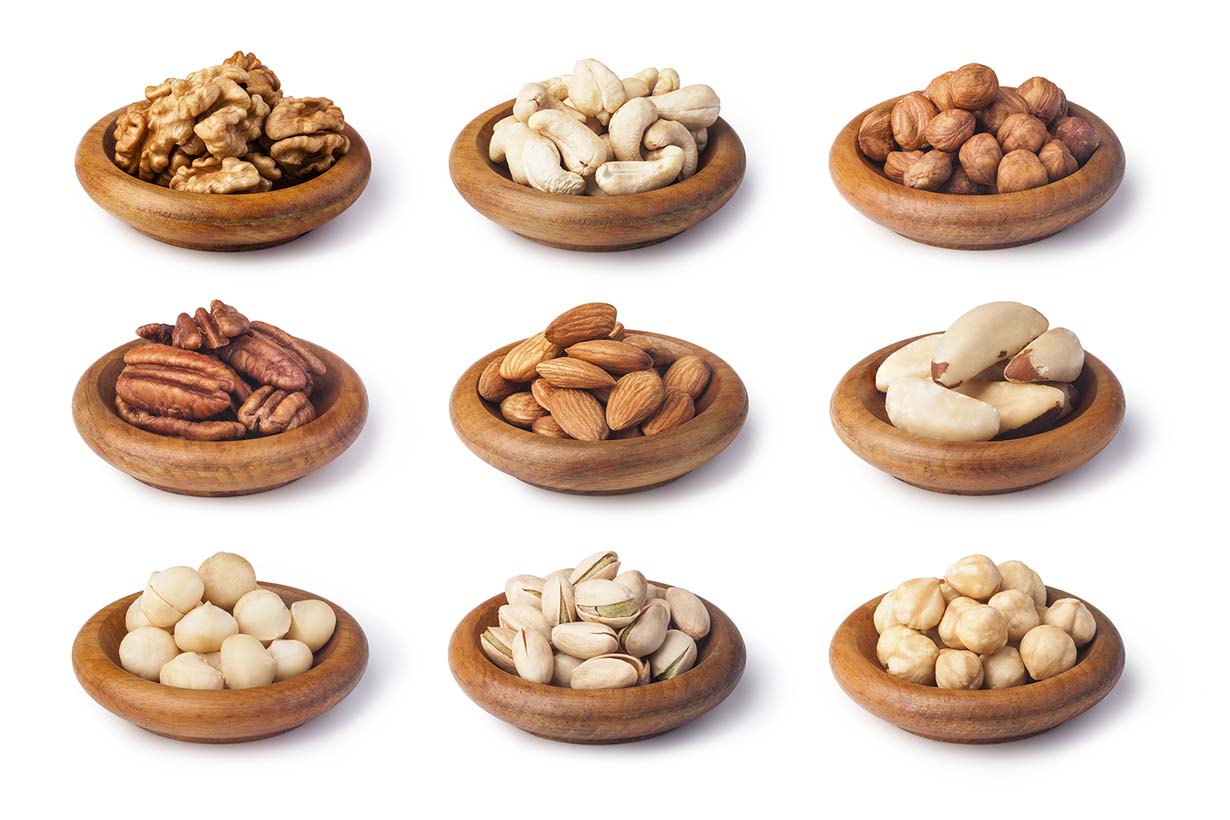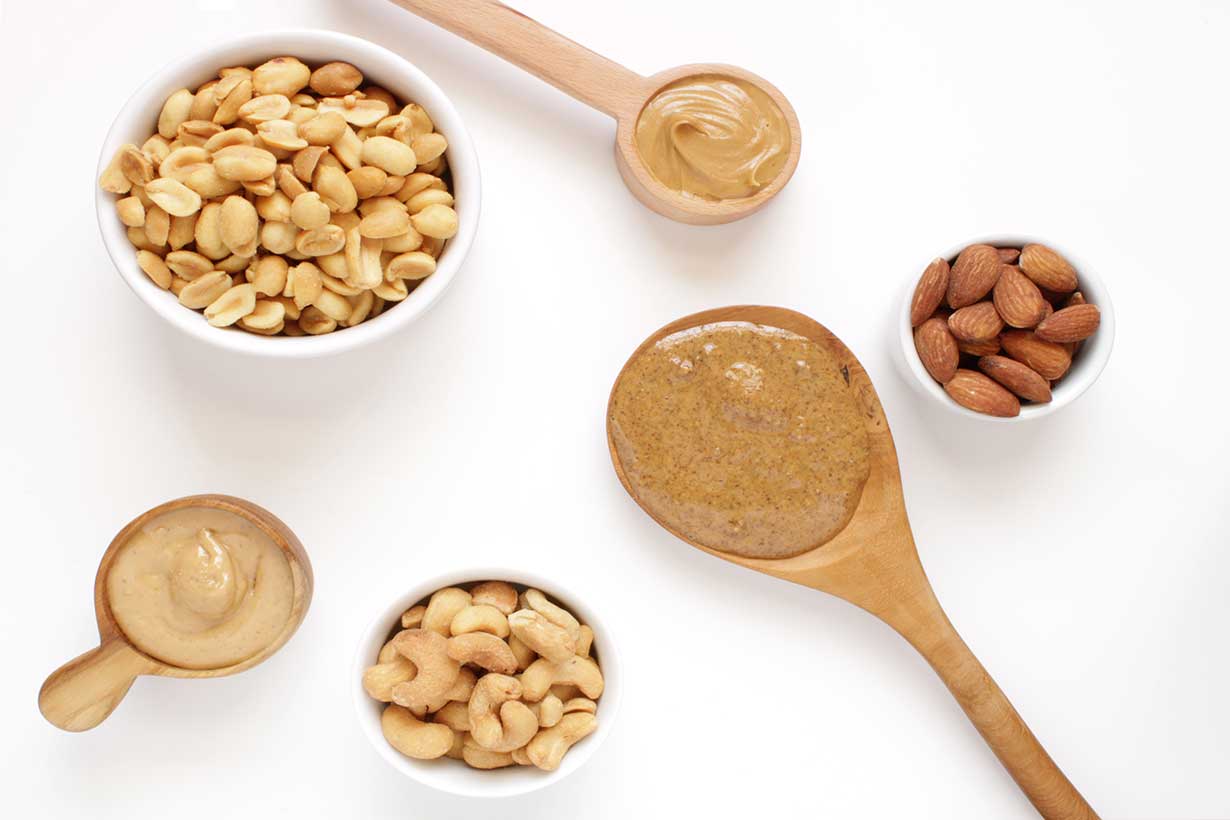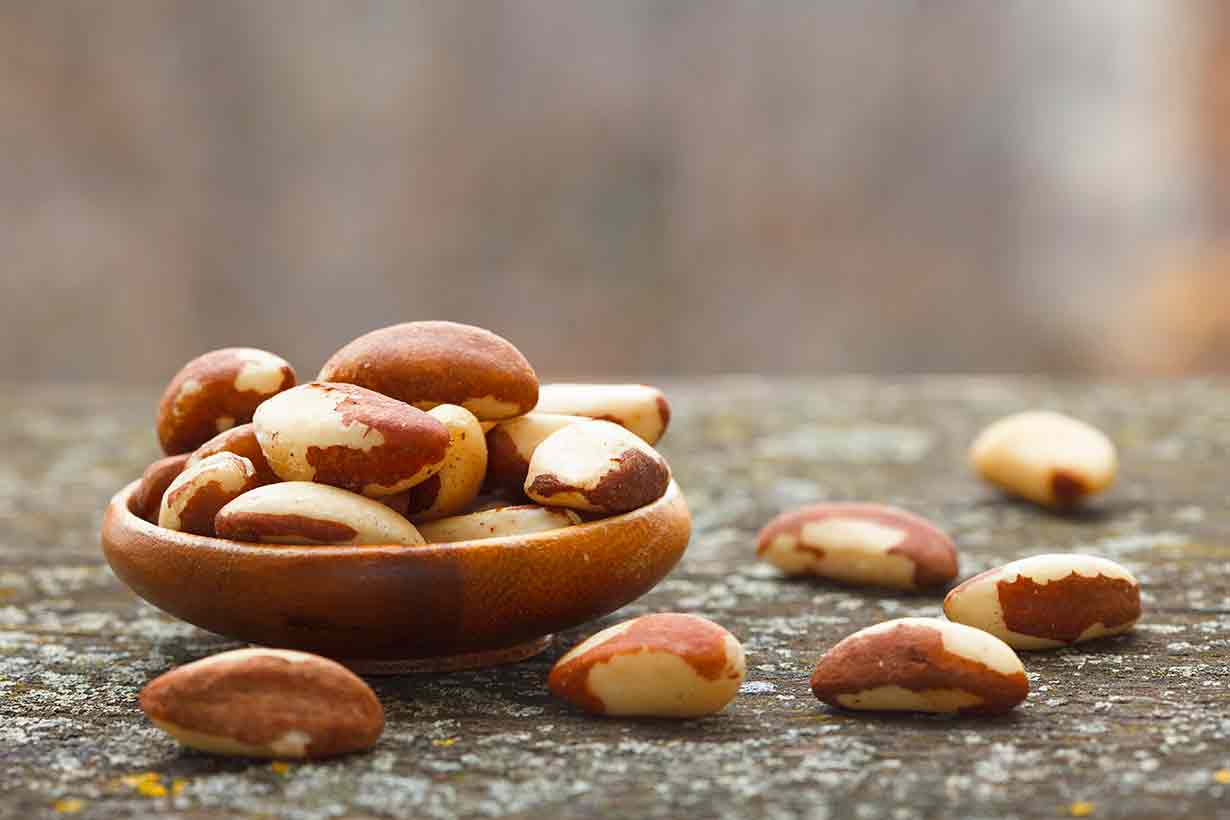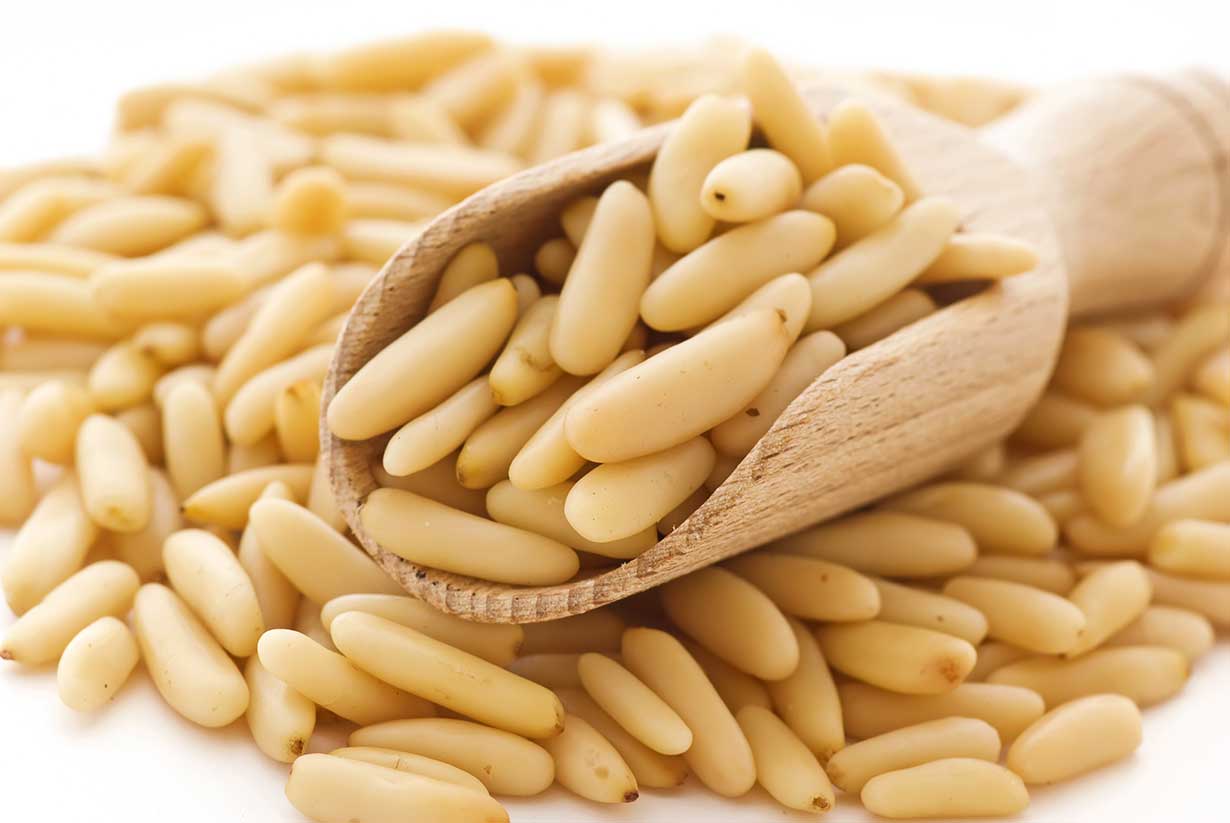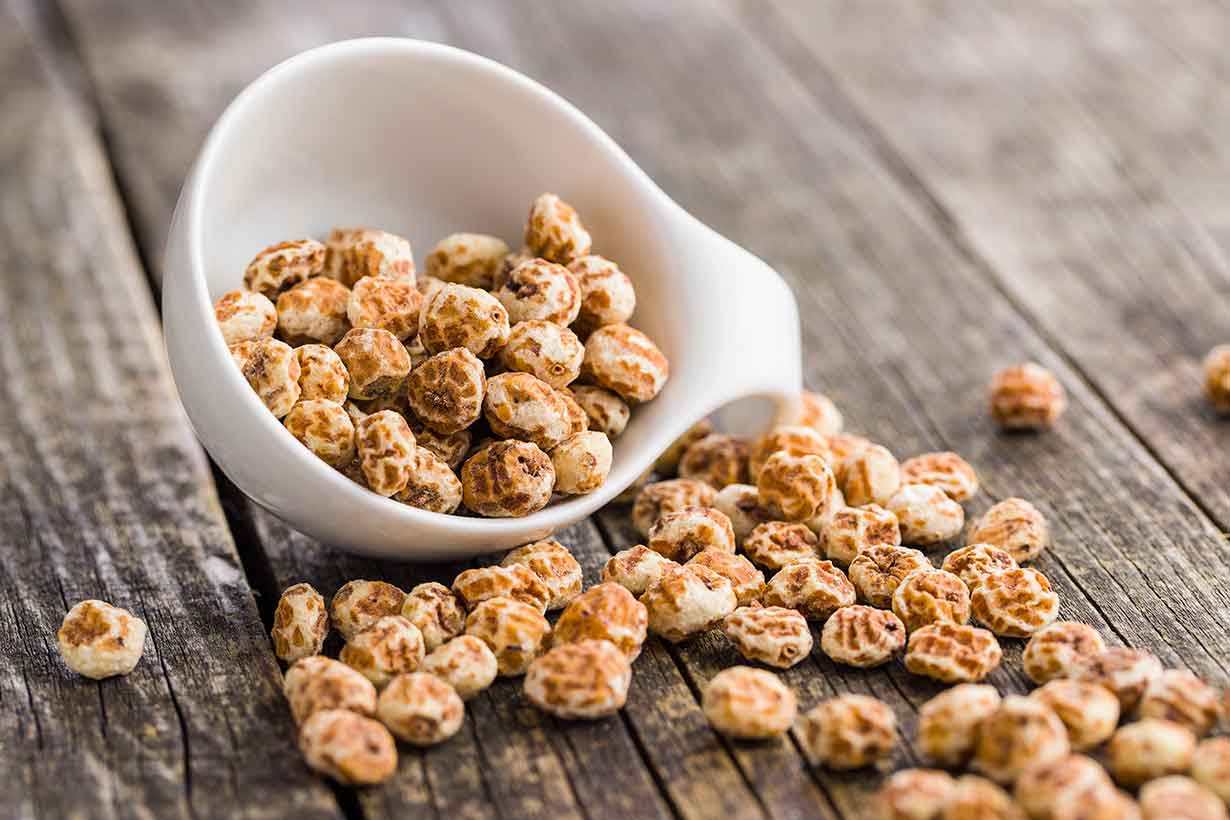Hazelnuts are a delicious type of tree nut, and they grow throughout Asia, Europe, and North America.
These nuts have a sweet and nutty flavor combined with a crunchy texture, and this makes them a desirable ingredient in many different foods.
However, what health benefits do hazelnuts offer?
And what nutrients do they contain?
Nutrition Facts
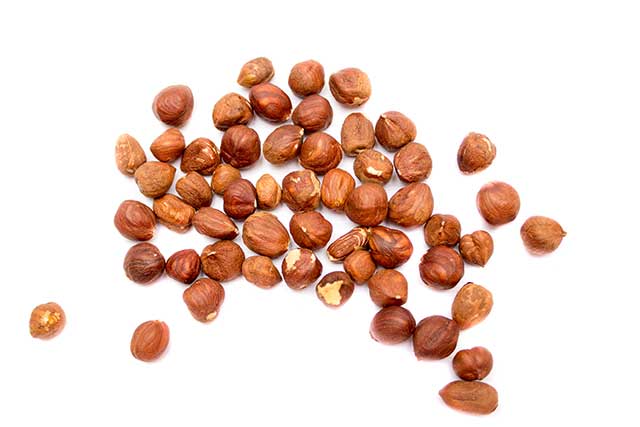
Hazelnuts have an excellent nutrition profile, and they are among the most nutrient-dense nut choices.
Based on the USDA Nutrient Composition Database, here are the nutritional values for hazelnuts per ounce (28-gram) serving (1).
Calories and Macronutrients
| Calories/Nutrient | Amount |
|---|---|
| Calories | 178 kcal |
| Carbohydrate | 4.7 g |
| – Fiber | 2.7 g |
| – Sugars | 1.2 g |
| Fat | 17.0 g |
| – Saturated Fat | 1.3 g |
| – Monounsaturated Fat | 12.8 g |
| – Polyunsaturated Fat | 2.2 g |
| – Omega-3 | 24.4 mg |
| – Omega-6 | 2193 mg |
| Protein | 4.2 g |
Vitamins
| Vitamin | Amount | % RDI |
|---|---|---|
| Vitamin E | 4.2 mg | 21 % |
| Vitamin B1 | 0.2 mg | 12 % |
| Vitamin B6 | 0.2 mg | 8 % |
| Folate | 31.6 mcg | 8 % |
| Vitamin K1 | 4.0 mcg | 5 % |
| Vitamin C | 1.8 mg | 3 % |
| Vitamin B3 | 0.5 mg | 3 % |
| Vitamin B5 | 0.3 mg | 3 % |
| Vitamin B2 | Trace | 2 % |
| Vitamin A | 5.6 IU | 0 % |
Minerals
| Mineral | Amount | % RDI |
| Manganese | 1.7 mg | 86 % |
| Copper | 0.5 mg | 24 % |
| Magnesium | 45.6 mg | 11 % |
| Phosphorus | 81.2 mg | 8 % |
| Iron | 1.3 mg | 7 % |
| Potassium | 190 mg | 5 % |
| Zinc | 0.7 mg | 5 % |
| Calcium | 31.9 mg | 3 % |
| Selenium | 0.7 mcg | 1 % |
As shown, hazelnuts are primarily a source of fat, but they do contain moderate amounts of fiber and protein.
Additionally, the nuts contain almost every essential vitamin and mineral in varying proportions.
Health Benefits of Hazelnuts
Here is a look at some evidence-based health benefits that hazelnuts may offer.
1) A Rich Source of Vitamin E
Vitamin E is an essential vitamin that has antioxidant functions in the human body.
Per typical ounce (28-gram) serving, hazelnuts provide 21% of the reference daily intake (RDI) for the vitamin. Hazelnuts have a higher concentration of this vitamin than all other nuts except for almonds (1, 2).
According to research, vitamin E plays a role in protecting against lipid peroxidation (the oxidation of fats), and it strengthens general immune response (3).
For this reason, vitamin E often appears in foods with a high proportion of fat such as nuts, seeds, and oily fish.
Vitamin E may also have cancer-protective properties, and some research suggests it may enhance apoptosis, which refers to the cell death of cancer cells (4, 5).
2) Packed With Manganese and Copper
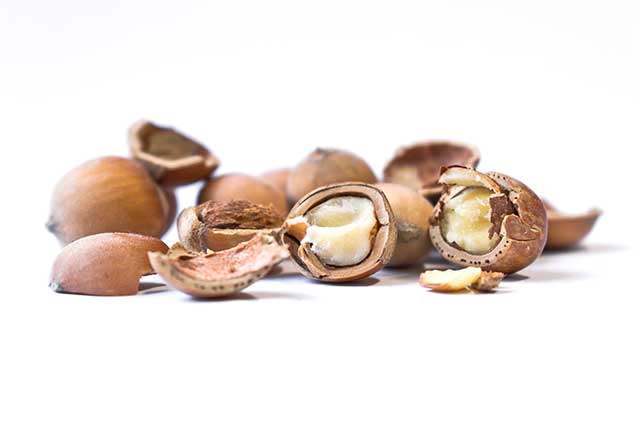
Just one ounce of hazelnuts provides 86% and 24% of the RDI for manganese and copper respectively.
Firstly, manganese is essential for proper bone development, wound healing, and for the activation of various enzymes (6).
Copper has numerous vital functions in the body too. Among these, the mineral is responsible for maintaining healthy blood vessels, bones, and immune function.
Additionally, it is important for iron transportation, and it plays a part in the formation of red blood cells (7).
Generally speaking, all nuts are a rich source of minerals. For another excellent source of copper, see this guide to cashew nuts.
3) May Beneficially Impact Cardiovascular Risk Markers
Several clinical trials have demonstrated that hazelnuts may have a positive effect on markers of cardiovascular risk.
On this note, a recent systematic review analyzed randomized controlled trials on the effect of hazelnut intake on blood lipids (cholesterol).
In these controlled trials, hazelnut intake of between 29 grams and 69 grams per day for 28 – 84 days had the following effects on participants (8);
- Total cholesterol and LDL cholesterol decreased significantly
- There was no significant influence on HDL levels
- Triglyceride levels remained unchanged
Since hazelnut intake improved the ratio of non-HDL cholesterol to HDL cholesterol, this may beneficially impact cardiovascular risk.
For instance, many researchers believe that the ratio of non-HDL cholesterol to HDL cholesterol is a more accurate measure of risk than the traditional LDL vs. HDL ratio (9, 10, 11).
The researchers who conducted the systematic review theorized that the high monounsaturated fat content of hazelnuts and the bioactive compounds (polyphenols) might be responsible for these lipid changes.
4) High In Fiber and Protein
Although they are mainly a source of fat, hazelnuts also provide a moderate amount of carbohydrate and protein.
Hazelnuts only contain 4.7 grams of carbohydrate per serving, and more than half of this (2.7 grams) is fiber — additionally, one serving supplies 4.2 grams of protein (1).
Both fiber and protein are thought to have satiating properties. A range of research demonstrates that protein is likely the most significant contributor to satiety, followed by fiber (12, 13, 14).
As a result, the fiber and protein content of hazelnuts may play a part in encouraging satiety, particularly if they are replacing “snacks” like candy or potato chips.
5) Hazelnuts Contain Various Polyphenols
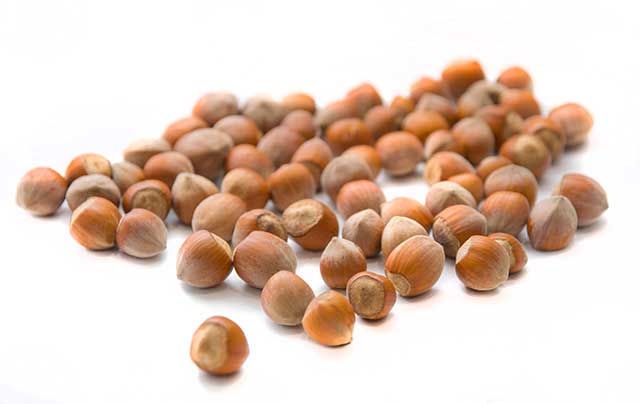
Hazelnuts contain a wide range of polyphenolic compounds, otherwise known as polyphenols or sometimes “antioxidants.”
The most prevalent class of compounds in hazelnuts are called proanthocyanidins, and hazelnut skin appears to be high in phenolic acids such as gallic acid and caffeic acid (2, 15).
On this note, a recent review of proanthocyanidins found that the compounds may have potential health benefits including anti-inflammatory activities. However, the authors noted that large clinical trials in humans are required to confirm this (16).
Human cell line (test tube) studies suggest that hazelnut polyphenols can have anti-inflammatory effects and may also have an inhibitory effect on cancer cell growth (17).
However, it is vital to take studies like this into context; what happens in a test tube and the human body are very different things.
In other words; such studies do not infer that eating hazelnuts would have the same effect.
Ongoing studies into polyphenols are interesting, but some of these compounds have poor bioavailability, and more clinical research in humans is necessary.
For more polyphenol-rich nuts, see this guide to chestnuts.
6) May Lower Markers of Inflammation
The final potential benefit is that hazelnut intake may lower some markers of inflammation.
However, this benefit should be taken with a grain of salt because conflicting studies exist.
In one study, twenty-one participants consumed a control diet for four weeks, followed by a hazelnut-enriched diet for four weeks. As part of this diet, hazelnuts contributed 18-20% of total energy intake.
After four weeks, various markers of inflammation, such as C-reactive protein (CRP) and oxidized LDL, were “significantly lower” (18).
After the hazelnut-enriched diet, the participants then consumed a hazelnut-free control diet for four further weeks. Interestingly, the beneficial changes to inflammatory markers reversed during this second control diet.
However, it is difficult to prove these anti-inflammatory benefits were specifically because of the hazelnuts. For instance, it is possible that the effects were due to the replacement of a control food that was having a negative impact.
Additionally, a randomized clinical study found that adding 40 grams of hazelnuts to a McDonald’s meal reduced postprandial markers of inflammation and oxidative stress in 22 healthy volunteers (19).
On the other hand, another randomized controlled trial found that a 12-week intervention program of either 30 grams or 60 grams of hazelnuts per day had “minimal effects on inflammatory markers” (20).
Potential Side Effects and Drawbacks of Hazelnuts
Like all nuts, there are some potential side effects to be aware of about hazelnut intake.
1) Hazelnut Allergy
Tree nuts are one of the most notorious foods for allergic reactions, and hazelnuts can, unfortunately, cause potentially severe reactions.
According to the American Academy of Allergy, Asthma and Immunology, hazelnut allergy had the highest prevalence of probable food allergy in Europe among 24 pre-selected and “commonly implicated” foods (21).
The University of Manchester’s Faculty of Biology, Medicine and Health also notes that allergies to tree nuts can be very severe and that it is the proteins found in nuts that triggers allergic reactions (22).
It is clear that anyone with a nut allergy (or suspected nut allergy) should avoid hazelnuts and consult their doctor.
2) Hazelnuts are Very High In Calories
While a regular serving of hazelnuts can offer a variety of benefits, it is easy to over-consume them.
To put it another way; since 100 grams of hazelnuts provides well over 600 calories, moderation is necessary.
Unfortunately, knowing when to stop can sometimes be difficult with nuts like hazelnuts and macadamia nuts; they are both delicious.
Recipe Tip: Dark Chocolate Covered Hazelnuts
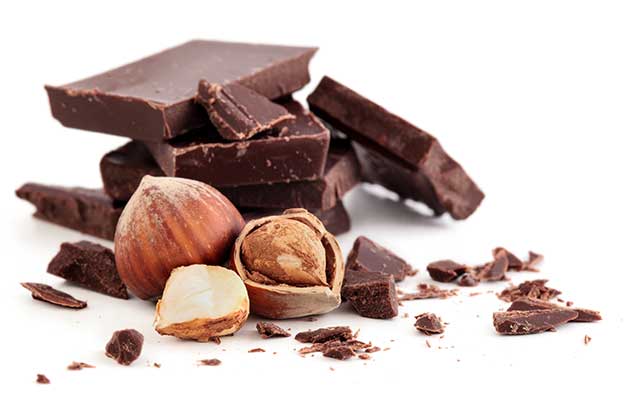
Before we finish, here is a quick recipe idea.
Chocolate and hazelnuts are both delicious on their own, but together they make a perfect combination.
To make some simple dark chocolate covered hazelnuts, you only need three ingredients;
- 5 oz (140 grams) of dark chocolate (70 – 90%)
- 1 cup (150 grams) of hazelnuts
- Pinch of salt
This recipe will make around five servings.
All you have to do is melt the dark chocolate in a pan, add the salt and hazelnuts, and then thoroughly coat the nuts in the melted chocolate.
After this, just put the chocolate covered hazelnuts in the refrigerator for the chocolate to harden and cool.
Final Thoughts
Overall, hazelnuts offer healthy fats, fiber, protein, essential vitamins and minerals, and some potentially beneficial bioactive compounds.
These nuts may also have further health benefits through their potential influence on health markers such as cholesterol and inflammation.
Since hazelnuts also taste delicious, adding a small number of them to our diet is an easy way to increase essential nutrient intake.
For more on nuts, see this guide to Brazil nuts.

